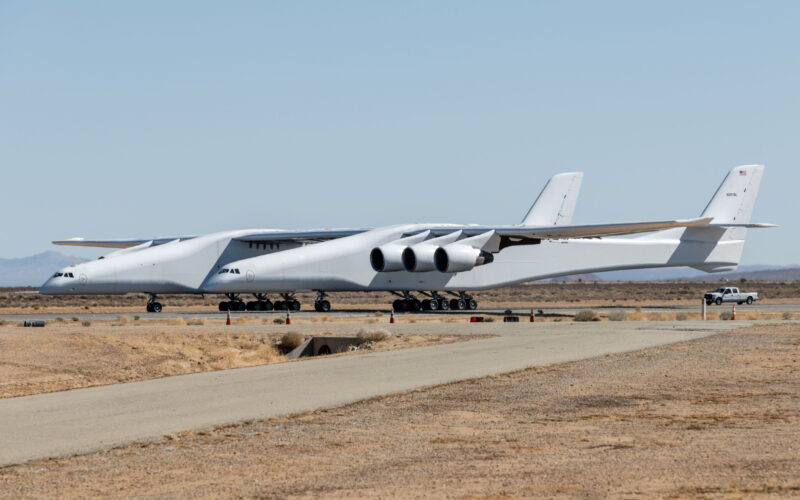In the vast expanse of the skies, a select group of colossal aircraft have etched their mark, defying the conventional limits of aviation. Plane manufacturers continue to stretch the limits of design, with advancements in efficiency and speed resulting in enhanced travel experiences. From cargo hauling to passenger transport, these giants of the air have redefined what it means to soar.
Join us as we count down from 10th place to unveil the Top 10 biggest planes in the world ever built (comparing wingspan), each with its own unique tale of engineering marvel and sky-high accomplishments.
10. Airbus A340-600: the extended range cruiser
Technical specifications:
- Length: 67.33 meters (220.11 feet)
- Wingspan: 63.45 meters (208.17 feet)
- MTOW (maximum take-off weight): 380 tons (840,000 pounds)
Our journey begins with the Airbus A340-600, an aircraft renowned for its impressive range of 9,000 nautical miles (nm) or 16,668 kilometers (km) and luxurious accommodation facilities. It enabled passengers to travel from Sydney, Australia to Los Angeles, USA in a non-stop flight.
The A340-500/600 entered commercial service on 1 August 2002. This long-haul marvel allowed airlines to connect distant cities and continents without layovers, setting the stage for ultra-long-haul travel and enhancing the comfort of passengers during extensive flights. As of 2022, 14 A340-600 aircraft are still operated by 7 different airlines.
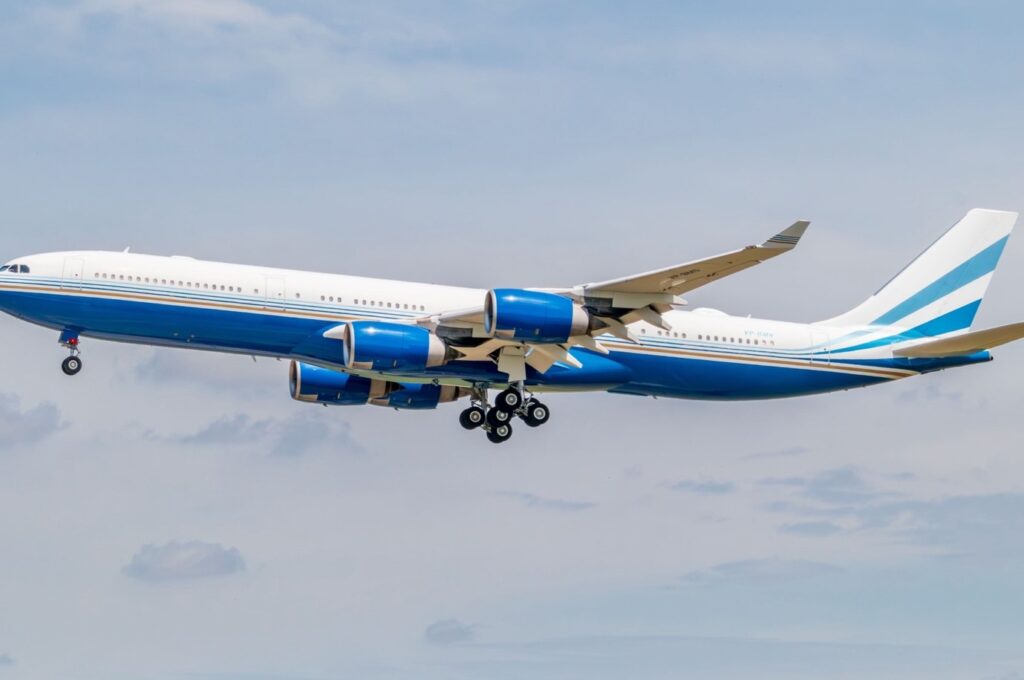
9. Boeing 747 Dreamlifter: bridging skies with cargo efficiency
Technical specifications:
- Length: 71.68 meters (235 feet)
- Wingspan: 64.44 meters (211.5 feet)
- MTOW: 401 tons (803,001 pounds)
In the ninth spot, the Boeing 747 Dreamlifter wide-body aircraft stands out as a true testament to engineering ingenuity. Designed to transport oversized cargo, this aircraft plays a vital role in connecting global industries and facilitating the movement of large components and equipment.
The first two Large Cargo Freighters (LCFs) entered commercial service in 2007. Atlas Air, through a contractual agreement with Boeing, operates all four of the aircraft built to date.
8. Antonov An-22 Antei: the turboprop titan
Technical specifications:
- Length: 57.9 meters (190 feet)
- Wingspan: 64.4 meters (211.3 feet)
- MTOW: 275 tons (551,156 pounds)
Landing in the eighth spot is the Antonov An-22 also known as Antei, a turboprop-powered cargo aircraft that held the title of the world’s heaviest aircraft for a substantial period. The An-22’s four-engine design, along with its oversized cargo capacity, solidifies its place among aviation giants.
The Antonov An-22 was introduced in 1967. Its current operators are the military Russian Aerospace Forces and the Ukrainian Antonov Airlines, specialized in cargo transportation.
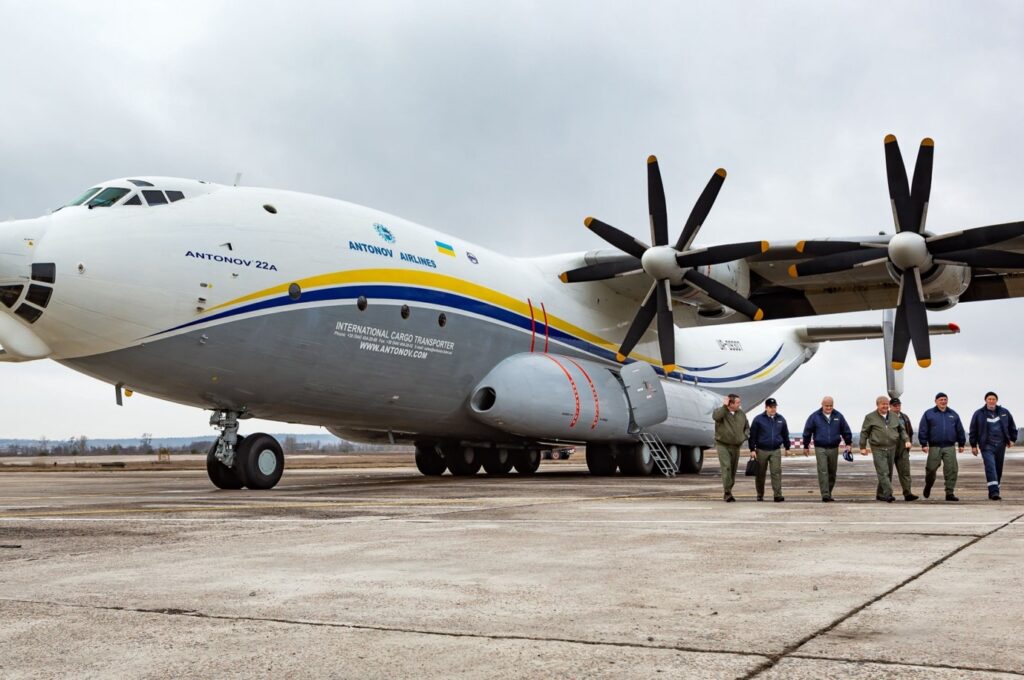
7. Lockheed Martin C-5M Super Galaxy: the military behemoth
Technical specifications:
- Length: 75.31 meters (247.1 feet)
- Wingspan: 67.89 meters (222.9 feet)
- MTOW: 420 tons (840,000 pounds)
At the seventh position stands the Lockheed Martin C-5M Super Galaxy, a strategic airlift aircraft operated only by the United States Air Force (USAF) since 1969. With its cavernous cargo hold and impressive payload capacity of 81,600 kg or 180,000 lb, this military behemoth plays a pivotal role in supporting military operations and humanitarian missions around the world.
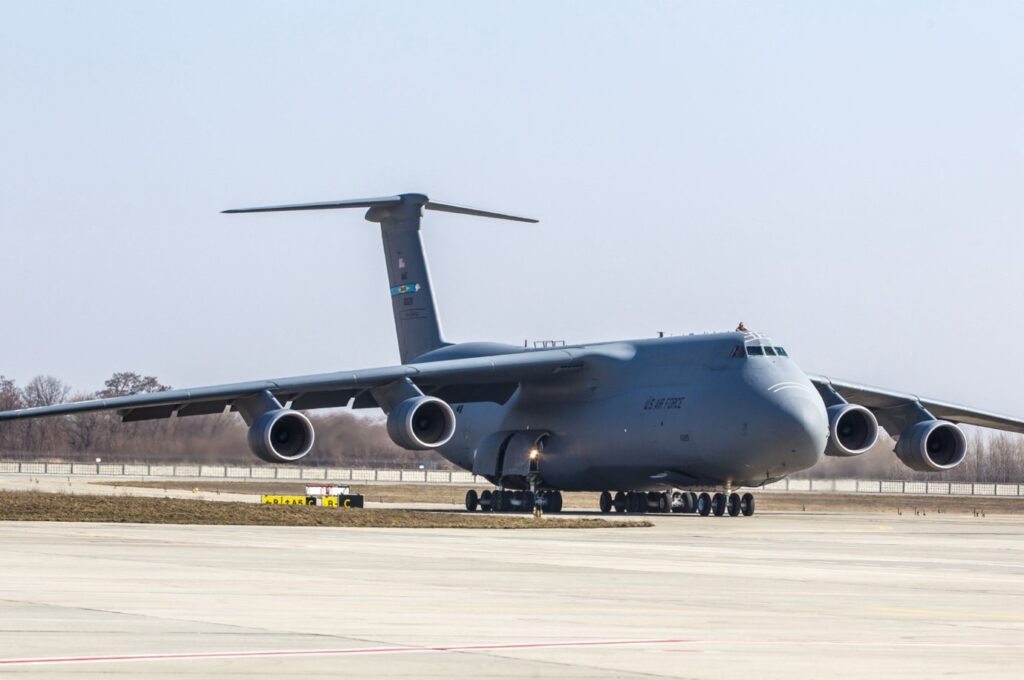
6. Boeing 747-8: the modern jumbo jet
Technical specifications:
- Length: 76.25 meters (250.2 feet)
- Wingspan: 68.45 meters (224.7 feet)
- MTOW: 487 tons (987,000 pounds)
The sixth spot belongs to the Boeing 747-8, a contemporary iteration of the iconic 747 series and also its biggest variant. While only 37 Boeing 747-8 passenger aircraft are active, primarily operated by Lufthansa, there are 110 active 747-8F freighter variants, highlighting the enduring appeal of the 747-8 for cargo operations.
Boeing 747-8 started its commercial service in June 2012. In its standard three-class layout, it has the capacity to accommodate 467 passengers and is still highly operational. Its enduring legacy and impact on global aviation cannot be overstated.
5. Boeing 777-9: the next-generation giant
Technical specifications:
- Length: 76.73 meters (251.9 feet)
- Wingspan: 71.75 meters (235.5 feet)
- MTOW: 351 tons (775,000 pounds)
Taking the fifth position, we have the Boeing 777-9, representing the evolution of a revered aircraft series. With advanced aerodynamics, powerful engines, and innovative cabin design, the 777-9 is projected to redefine long-haul travel. It will offer airlines improved efficiency, an extended range of 7,285 nm or 13,500 km, plus enhanced passenger comfort, setting new standards for seamless and enjoyable intercontinental flights.
The Boeing 777-9 is expected to enter service by 2025. There are already over 11 airlines that have placed orders for this aircraft.
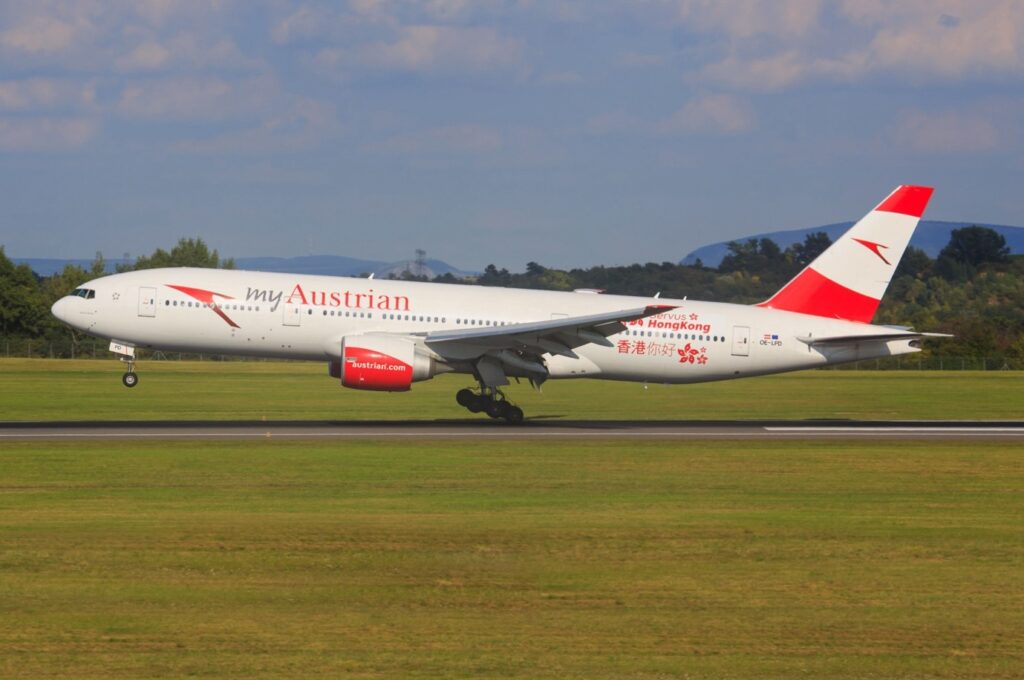
4. Antonov An-124 Ruslan: the heavy cargo hauler
Technical specifications:
- Length: 69.1 meters (226.8 feet)
- Wingspan: 73.3 meters (240.6 feet)
- MTOW: 443 tons (886,258 pounds)
In the fourth place, we have the Antonov An-124 Ruslan, a Ukrainian-made giant renowned for its unparalleled cargo-carrying capabilities. Originally designed for military applications, the An-124 has transitioned seamlessly into commercial use, playing a critical role in transporting oversized and bulky items across the globe.
The Antonov An-124 Ruslan was introduced into service in 1986. Currently, the AN-124 is the heaviest cargo plane in operation. While the Russian Aerospace Forces are one of the operators, the Antonov An-124 is also used by civilian cargo airlines such as Antonov Airlines in Ukraine, Volga-Dnepr in Russia, and Maximus Air.
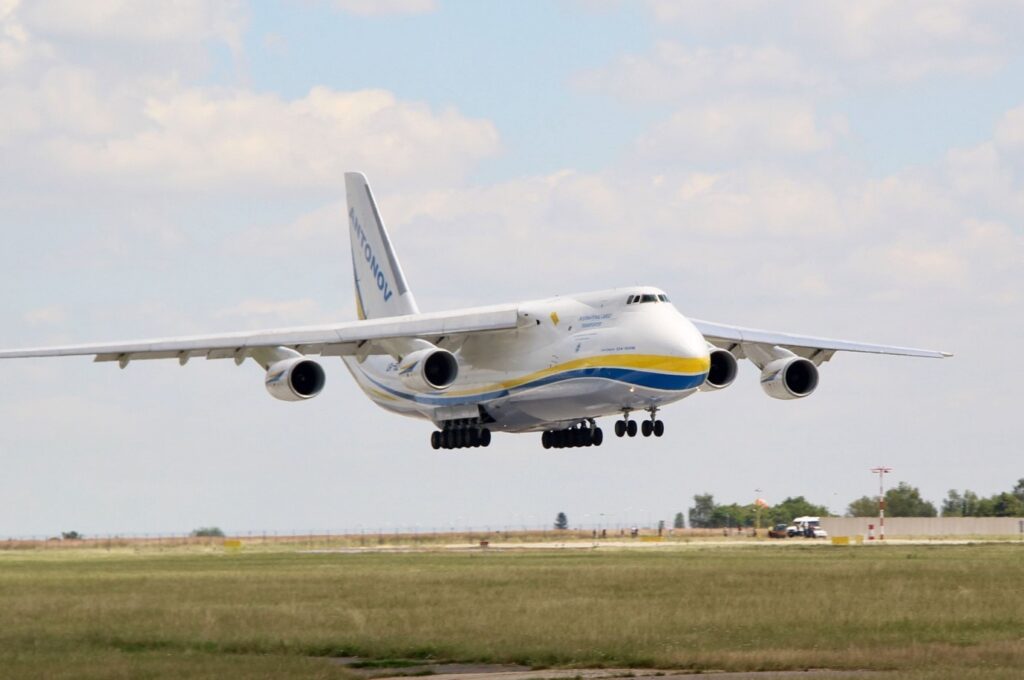
3. Airbus A380-800: the giant passenger carrier
Technical specifications:
- Length: 72.72 meters (238.7 feet)
- Wingspan: 79.75 meters (261.8 feet)
- MTOW: 633 tons (1,267,658 pounds)
Taking the third spot is the Airbus A380, often referred to as the ‘superjumbo’. With its double-decker design and capacity to accommodate up to 853 passengers, the A380 revolutionized long-haul air travel by offering unprecedented space and luxury. Its range and fuel efficiency have transformed the aviation industry and it continues to shape the future of passenger transportation.
Airbus A380 first entered service on 25 October 2007. Manufacturing of the aircraft has ceased following the assembly of 251 units, and there are no intentions to introduce a successor to this airborne giant. There are 16 operators of this aircraft as of the time of writing.
2. Antonov An-225 Mriya: the king of the skies
Technical specifications:
- Length: 84 meters (275.7 feet)
- Wingspan: 88.4 meters (290 feet)
- MTOW: 705 tons (1,410,958 pounds)
The runner-up here is the Antonov An-225 Mriya, a true colossus that holds multiple records for its size and capabilities. Originally designed to carry the Soviet Buran space shuttle, the An-225 has since become an indispensable asset for transporting oversized cargo across continents.
The world’s largest transport aircraft remained operational until its demise amid the Battle of Antonov Airport, which occurred during the invasion of Ukraine in 2022. Prior to this, it held the distinction of being the heaviest aircraft ever constructed, boasting an impressive maximum take-off weight of 705 tons.
Antonov An-225’s first flight in commercial service took place on 3 January 2002. On May 20, 2022, Ukrainian President Volodymyr Zelenskyy announced plans to finalize the construction of a second An-225 to substitute the lost aircraft. Subsequently, in November 2022, Antonov declared their intention to reconstruct the aircraft that had been destroyed, based on a second airframe that was never completed.
1. Scaled Composites Stratolaunch Roc: the flying launchpad
Technical specifications:
- Length: 73 meters (238 feet)
- Wingspan: 117 meters (385 feet)
- MTOW: 649 tons (1,300,000 pounds)
Topping our list as the biggest plane in the world in terms of its wingspan is the Scaled Composites Stratolaunch. Also known as Roc, it’s an unconventional aircraft that redefines our understanding of space launch platforms. With a wingspan exceeding the length of a football field, the Roc serves as an airborne launchpad for rockets, offering a flexible and cost-effective approach to space access. This unique innovation represents the fusion of aviation and space technologies.
Stratolaunch features a twin-fuselage setup, with each fuselage measuring 238 feet (73 meters) in length. It is upheld by 12 main landing gear wheels and two nose gear wheels, totaling 28 wheels. The cockpit situated in the right fuselage caters to the pilot, co-pilot and flight engineer, while the left fuselage houses the flight data systems.
Roc’s first flight took place in April 2019. By April 2023, Stratolaunch had successfully completed ten flights, including three with a hypersonic test aircraft, officially earning operational status. It has been owned by Cerberus Capital Management since 2019.
| Rank | Aircraft Model | Length (m) | Wingspan (m) | MTOW (tons) |
| 10 | Airbus A340-600 | 67.33 | 63.45 | 380 |
| 9 | Boeing 747 Dreamlifter | 71.68 | 64.44 | 401 |
| 8 | Antonov An-22 Antei | 57.9 | 64.4 | 275 |
| 7 | Lockheed Martin C-5M | 75.31 | 67.89 | 420 |
| 6 | Boeing 747-8 | 76.25 | 68.45 | 487 |
| 5 | Boeing 777-9 | 76.73 | 71.75 | 351 |
| 4 | Antonov An-124 Ruslan | 69.1 | 73.3 | 443 |
| 3 | Airbus A380-800 | 72.72 | 79.75 | 633 |
| 2 | Antonov An-225 Mriya | 84 | 88.4 | 705 |
| 1 | Stratolaunch Roc | 73 | 117 | 649 |

